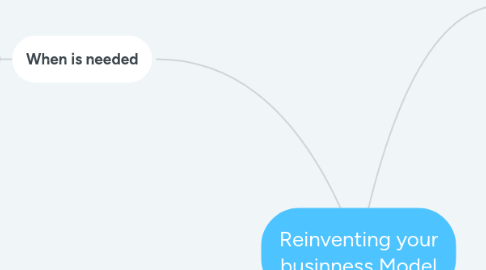
1. When is needed
1.1. "When significant changes are needed to all four elements of your existing model".
1.2. Strategic Circumstances
1.2.1. Opportunity to democratize products in emerging markets.
1.2.2. Capitalize on a brand-new technology
1.2.3. The opportunity to bring a job-to-be-done focus where one does not yet exist
1.2.4. The need to fend off low-end disruptes
1.2.5. The need to respond to a shifting basis of competition
2. Rules, Norms and Metric
2.1. Financial
2.1.1. Gross Margins
2.1.2. Opportunity size
2.1.3. Unit pricing
2.1.4. Unit margin
2.1.5. Time to breakeven
2.1.6. Net present value calculations
2.1.7. Fixed cost investment
2.1.8. Credit items
2.2. Operational
2.2.1. End-product quality
2.2.2. Supplier quality
2.2.3. Owned versus out-sourced manufacturing
2.2.4. Customer service
2.2.5. Channels
2.3. Other
2.3.1. Pricing
2.3.2. Perfomance demands
2.3.3. Product-development life cycles
2.3.4. Basis for individuals- rewards and incentives
3. Rarely emerge from established businesses
3.1. New product usually needs a new businness model
4. Three steps
4.1. Think of the opportunity to satisfy a real customer who needs a job done
4.2. Blueprint layout of how company will fulfill that need at a profit. 4 Steps
4.2.1. Customer value Proposition (CVP)
4.2.1.1. Better
4.2.1.2. Cheaper
4.2.1.3. Alternatives
4.2.2. Profit Formula
4.2.2.1. Revenue model: price x volume
4.2.2.2. Cost structure (cost key resources)
4.2.2.3. Margin model: contribution needed to achive desired profits
4.2.2.4. Resource velocity: How fast turn over inventory, fixed assets, other assets
4.2.3. Key Resources
4.2.3.1. Assets : people, technology, products, facilities, equipment.
4.2.4. Key Processes
4.2.4.1. Development, manufacturing, budgeting, planning, scales and service (Deliver value to repeat and increase scale).
